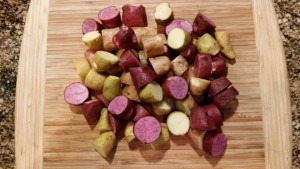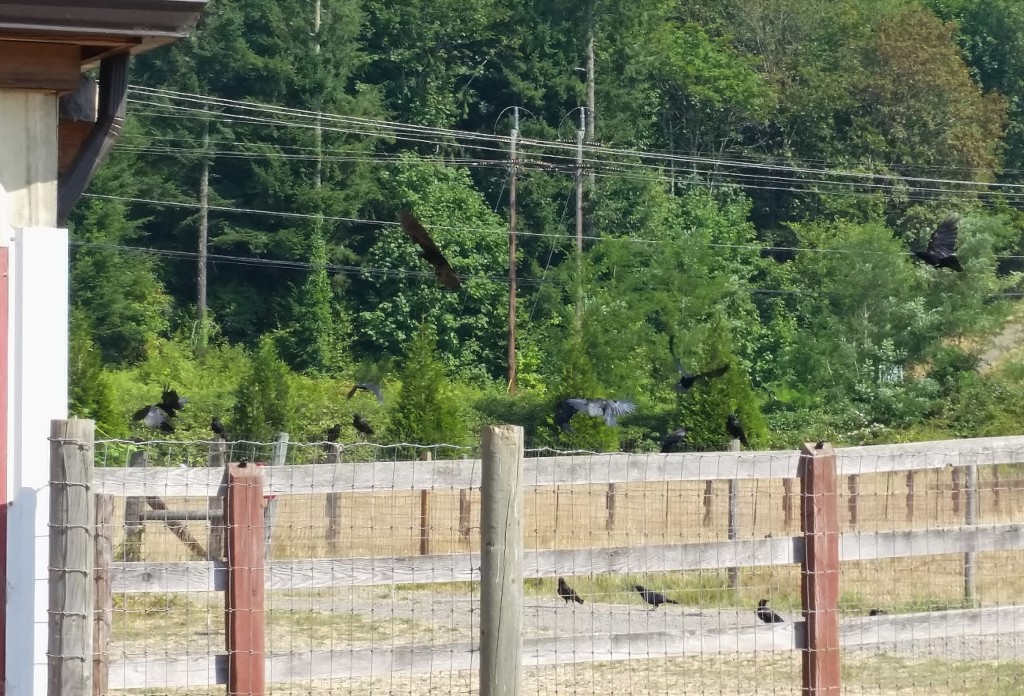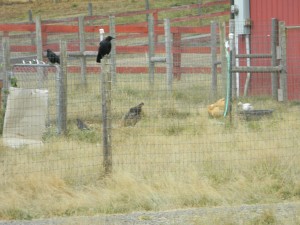Attacks on Amazon by Authors United—a group of authors, many of whom seem to have cozy relationships with traditional publishers—are in the news again. The group was founded in 2014 by novelist Douglas Preston, during book distribution contract negotiations between Amazon and Hatchette, the traditional publisher with whom Preston is under contract. The current round of attacks have been made this week at the American Booksellers Association Winter Institute, during a panel discussion sponsored by, among others, Authors United and The Authors Guild.
According to published news reports on the conference, statements made about Amazon’s “deleterious impact” on, and power over, the world of publishing include such breathless pronouncements as that Amazon is “already affecting the free flow of ideas in our society,” “now controls the vital informational market of books,” that there are potential authors out there “who may never write books because of Amazon’s policy ‘to extinguish’ competitors” (What? Authors are potential competitors to Amazon?), that “Amazon is ‘destroying the culture of book publishing,’” and that “if Amazon’s business practices continue unchecked the result could be a ‘nuclear winter’ for book publishing.”
Wow—are we talking about Amazon, or the First Order from the new Star wars movie? The next thing you know, these guys are going to be claiming that Jeff Bezos is actually Supreme Leader Snoke.
Preston and Authors United have previously accused Amazon of maintaining an illegal monopoly over the entire publishing industry, and have asked the U.S. Justice Department to investigate and prosecute Amazon for antitrust practices—a request that thus far has gone unheeded.
Coincidentally, last week I received an email from Amazon’s Kindle Direct Publishing division, titled “How Are We Doing?” In the email, Amazon—sounding not at all like an Evil Empire— asked authors to complete a brief survey about their experiences with the Kindle Direct Publishing program, and to offer suggestions for things they’d like to see improved or changed. I did complete the survey, but I’d like to go beyond that here, and offer my own take on the effects Amazon has had on the world of publishing.
To give some context to my remarks and opinions, I’m the author of a historical fiction series called The Strongbow Saga. I am not a best-selling author. I’m what used to be called “mid-list”: my books sell steadily, and have for some years, though not in huge numbers at any given time. The first books in my series were originally published by HarperCollins, one of the big traditional publishers, but after they languished there for a number of years I was fortunate enough to be able to reclaim the rights to them, and have rereleased them, and continued the series, by publishing my books myself, including through Amazon. In other words, I have personal experience as an author with both traditional and independent publishing.
So let’s talk, without all of the hype and emotion, about Amazon’s impact on the world of publishing. Make no mistake—Amazon’s impact has been enormous, and has in many ways turned the way publishing occurs upside down. But judge for yourself whether the impact and change has been a good thing, or the beginning of a nuclear winter endangering the very existence of books, writing, and publishing.
When I began my career as an author, there was no self-publishing option for authors. Self-publishing, in fact, used to mean that an author paid a so-called vanity press to print copies of his or her book, because he couldn’t sell them to a ‘real” publisher. The path to getting a book published was narrow and difficult, and controlled by a series of gatekeepers whose approval had to won. First, an author had to convince a literary agent that his or her book was worthy of consideration, and persuade the agent to actually deign to read the book. If the author was fortunate—and a large part of that, of course, included if the book was sufficiently well written—the agent would agree to represent it, and would take it to the next level of gatekeeper: editors at the big publishing houses. If the agent could find an editor who could be convinced that the book, if published, would make significant money for the publisher, then a contract would be signed, and the author would have broken into the rarified world of being published, and achieved success.
Except, of course, that very few authors, only a tiny percentage of those who have been published through this traditional model, actually ever achieve any kind of significant financial success under this system. Most books that are published are not bestsellers, and if that does not occur with traditionally published books, the author is unlikely to see much monetary return from his or her efforts. This was, and still is, the reality: the publisher typically will take about a year after the contract is signed to actually bring the book out into the marketplace. Once the book finally does go on sale, the author will begin earning royalties, or a percentage of the book’s price when sold—typically somewhere in the range of 6% for paperback editions, and 10% for hardcover. For e-book editions—and when my books were first published, the e-book market was envisioned and anticipated, but for practical purposes did not yet exist—the author’s royalty is 25% of the sale price. At those royalty rates, a LOT of copies of a book must be sold for the author to receive any kind of significant income, and the literary agent will take 15% off the top of anything the author does earn, for as long as the book is published under the contract the agent negotiated.
How did Amazon change that? To begin with, it pretty much created, through its own efforts and at its own expense, the e-book market as it exists today. Two essential elements were needed for a viable e-book market to develop: e-book reading devices that provided an enjoyable, easy to use reading experience, and were reasonably enough priced to persuade a large number of consumers to buy one, and a large supply of e-book content that those consumers could easily acquire, for a price that would cause readers to purchase an e-book edition rather than a print book.
There were e-book reading devices before the Kindle—Microsoft and Sony, for example, were among the early e-reader manufacturers. But those early devices were relatively expensive, there was limited e-book content available to buy, and what few books were released in e-book editions were priced by the big publishers so close to the cost of print editions that consumers were unimpressed, and the market for e-books remained a promising theory that didn’t catch on. Until Amazon entered it.
Amazon began creating and selling its Kindle e-book readers that were smaller, lighter, and easier to use than the competition, and Amazon sold them at a low enough price—supposedly making no profit, or even taking a small loss on each sale—that consumers began to buy them in significant numbers. And year after year Amazon brought out new, improved models, and kept lowering the price. Amazon believed in the potential of the e-book market, but understood that until many, many readers—millions of readers—had devices to read e-books on, that market was never going to come alive. Amazon had the vision and understanding of what the e-book market could be, and was willing to spend its own money as an investment to make that potential a reality. Amazon spent a LOT of its own money, probably millions, to develop a viable e-book market. No one else did. That should not be forgotten.
But e-book readers were only half of the equation. E-book content, making lots of books available in e-book editions, and at a low enough price to entice readers to buy an e-book instead of a print one, was the other half. And the big publishers were not supplying the content, nor were they pricing those e-book editions they did produce at a lower price than print. So out of that need for content, Amazon’s direct publishing program for authors was born. Amazon created something entirely new in the publishing world: a system where authors could bypass the entire traditional publishing path—the literary agents, the editors, the big publishing houses—and publish their books themselves, as e-books, with a major distributor, Amazon, who would handle the entire sales side for them. And Amazon offered terms the like of which no author had ever seen before, or even dreamed might be possible. If an author agreed to price his or her book between $2.99 and $9.99, the target range Amazon had determined was likely to draw readers to e-books rather than print, Amazon would pay the author 70% of each sale. Moreover, it would provide sales data to authors, telling them how many books they were selling, on an ongoing, daily basis, and would produce formal sales reports, and pay royalty earnings, monthly—a far cry from the big publishers’ practice, which continues to this day, of reporting sales and paying authors only twice per year.
Amazon’s vision of what could be proved prophetic. After the introduction of the Kindle self-publishing Program (now called Kindle Direct Publishing, or KDP) for authors, and over several years of releases of successively better and less expensive Kindle e-readers, the e-book market grew by large margins, until now it makes up roughly 20% of all book sales in the United States. And Amazon has carried this vision beyond the U.S., establishing Kindle e-book stores in the U.K., and later in many other countries, building a world-wide market for e-books.
Once the e-book market came to life and began generating millions of book sales for Amazon and the authors and publishers who availed themselves of this new way to publish, many other e-book distributors joined in, and have since established their own direct publishing platforms for authors, modelled after the innovation created by Amazon. Today authors can directly publish their books in e-book editions not only through Amazon, but also with Barnes & Noble, Kobo, and Apple (a major flaw, by the way, with the monopoly claim by Authors United, which seems to understand that area of the law about as well as the Malheur malcontents understand Constitutional law), and in Europe with the e-book publishing conglomerate Tolino. While it is true that Amazon still holds the largest share of the e-book market, that is neither surprising nor unfair, given the history of how the market was in its early years largely created by Amazon—and given that Amazon still does the most effective job of selling e-books to readers and attracting authors to its direct publishing program.
But Amazon has not just revolutionized publishing in the area of e-books. Authors can now directly publish their books in print editions, as well, through Amazon’s CreateSpace division, and have them sold all over the world. Through the ACX Exchange, another Amazon division, authors can find partners to create audio editions of their books, and have them sold by both Amazon and Apple through Amazon’s Audible division.
All of these changes have brought benefits to numerous authors, including many who, under the traditional publishing system controlled by the literary agents and big publishers, might never have seen their books published at all. But it is not just authors who have benefited from the innovations Amazon has brought to the publishing world. There are numerous new jobs and opportunities that have come into existence because of these changes. The audio editions of my own books, for example, were created by a young man (and at my age, I’m finding myself using that description “young” more and more frequently) who has been able to carve out a successful independent business for himself by virtue of his strong work ethic, amazing talent as a voice actor (my books have lots of dialogue and numerous characters, but he performs each with a distinct voice), and the ability to connect with authors through Amazon’s ACX Exchange. He has, at a young age, been able to build for himself a career that didn’t exist before Amazon began transforming publishing. Similarly, there are numerous graphic artists who are now able to maintain successful independent businesses designing book covers for authors who self-publish their books through Amazon and other direct publishing platforms. Thousands of people benefit financially from the changes and upheaval Amazon brought to the publishing industry.
The big publishers, and the literary agents whose livelihood is inextricably linked to them have, of course, lost some business due to these changes in how the world of publishing works—what their claim that Amazon is “destroying the culture of book publishing” really means. That change is occurring does not mean, however, that book publishing is on the verge of destruction. Amazon is not destroying the world of book publishing; it is transforming it. Transformation and destruction are not the same thing. There are many, many authors, including me, who can finally make a living from their writing, who could not under the old traditional publishing system. What Amazon has done is to democratize publishing. The oligarchs who used to hold total control over the publishing process are unhappy about that, because they are losing power and money as a result of the changes that are occurring. Thus the overheated outcries by groups tied to the traditional model like Authors United and the leadership of The Authors Guild (and I used to be a member of the Guild, but let my membership lapse due to my disapproval of their positions). Those who have become part of the successful one percent of authors under the old, traditional model cannot see beyond themselves to realize how the changes that are occurring benefit so many.
So Amazon, when you ask “How are we doing?” of the authors who choose to publish their books through the many innovative publishing systems you’ve created, who sell their e-books and audio books in marketplaces you largely brought into being, and who can get print editions of their books sold in many countries around the world thanks to you, I personally would say you are doing damn well.




























